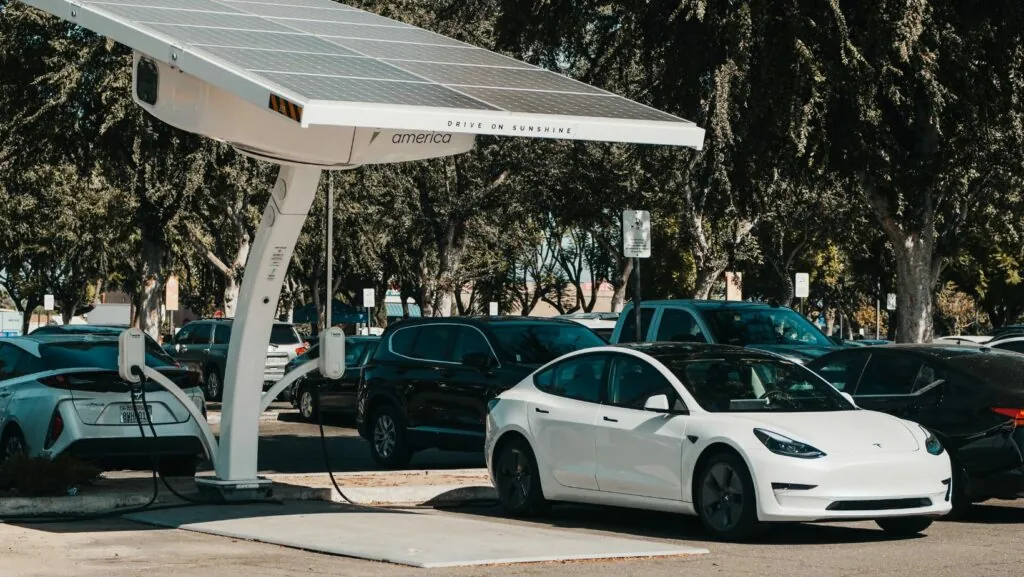Motor vehicles are more than just metal boxes on wheels; they’re the trusty steeds of modern life. Whether it’s zipping through traffic or embarking on epic road trips, these machines make adventures possible. Imagine the thrill of hitting the open road with the wind in your hair and your favorite playlist blasting. Sounds good, right?
Table of Contents
ToggleOverview of Motor Vehicles
Motor vehicles play a crucial role in transportation, serving millions for various purposes. These vehicles include cars, trucks, motorcycles, and buses, which cater to diverse needs and preferences. Cars dominate personal transport, providing convenience and accessibility for commuters.
Trucks facilitate the movement of goods, supporting industries and economies worldwide. Motorcycles offer a sense of freedom and agility, appealing to adventure-seekers. Buses contribute to public transportation, efficiently moving large numbers of passengers on predetermined routes.
In recent years, electric vehicles (EVs) and hybrid models gained traction, promoting sustainability. These innovations reduce environmental impact while enhancing fuel efficiency. According to the International Energy Agency, sales of electric vehicles increased by 40% in 2021 compared to 2020, indicating a shift towards greener technology.
Safety features have also improved, with modern motor vehicles equipped with advanced systems like automatic braking, lane departure alerts, and adaptive cruise control. The National Highway Traffic Safety Administration reports that vehicles equipped with these technologies significantly lower accident rates.
Motor vehicles contribute to economic growth. The global automotive industry generated over $3.5 trillion in revenue in 2020, highlighting its importance. Additionally, motor vehicles create jobs in manufacturing, maintenance, and sales sectors.
The future of motor vehicles likely includes further advancements in autonomous technology. Self-driving cars promise to revolutionize how people travel, making transportation safer and more efficient. As society continues to embrace change, the impact of motor vehicles will remain significant in enhancing mobility and connectivity.
Types of Motor Vehicles
Motor vehicles come in various forms, each designed to meet specific transportation needs. Understanding these types helps in choosing the right vehicle for different purposes.
Passenger Cars
Passenger cars are the most common motor vehicles, primarily used for personal transportation. They typically accommodate four to five passengers. Compact cars excel in fuel efficiency and urban navigation, while SUVs offer more space and off-road capabilities. Features like safety technology improve comfort and protect passengers. The versatility of passenger cars makes them a popular choice for families, commuters, and individuals seeking convenience.
Commercial Vehicles
Commercial vehicles play a vital role in business operations. They range from delivery vans to heavy-duty trucks designed for transporting goods. Light-duty vehicles often facilitate local deliveries, while medium- and heavy-duty trucks serve long-haul transportation. These vehicles can carry larger loads efficiently, contributing significantly to supply chain logistics. Businesses rely on commercial vehicles to maintain operational efficiency and ensure timely deliveries.
Motorcycles
Motorcycles appeal to those seeking excitement on two wheels. They provide a sense of freedom and are generally more agile than cars. Cruisers are popular for leisurely rides, while sport bikes cater to speed enthusiasts. Economical fuel consumption adds to their appeal, offering a cost-effective option for short commutes. Safety gear and awareness are essential for riders to mitigate risks on the road.
Technological Advancements in Motor Vehicles
Modern motor vehicles are rapidly evolving, integrating cutting-edge technologies to enhance performance and sustainability.
Electric and Hybrid Vehicles
Electric vehicles (EVs) reduce reliance on fossil fuels, promoting an eco-friendly approach to transportation. Many models now offer ranges exceeding 300 miles on a single charge. Hybrid vehicles combine gasoline engines with electric motors, improving fuel efficiency and lowering emissions. Charging infrastructure continues to expand, making EV ownership more convenient. Manufacturers focus on increasing battery efficiency and reducing costs, driving consumer adoption. Governments also provide incentives for both EV and hybrid purchases, further encouraging their market penetration.
Autonomous Driving Technology
Autonomous driving technology transforms motor vehicles, aiming for increased safety and reduced traffic congestion. Many companies test self-driving cars on public roads, showcasing innovative sensor and mapping technologies. Advanced driver-assistance systems (ADAS) help mitigate accidents, providing features like lane-keeping assistance and adaptive cruise control. Vehicles equipped with autonomous capabilities utilize artificial intelligence to navigate complex environments safely. Public acceptance grows as technology proves reliable, but regulatory frameworks continue to develop alongside these advancements.
Environmental Impact of Motor Vehicles
Motor vehicles significantly affect the environment through emissions and pollution.
Emissions and Pollution
Greenhouse gases contribute to climate change, primarily due to motor vehicle emissions. Carbon dioxide accounts for about 70% of emissions from transportation. Nitrogen oxides, volatile organic compounds, and particulate matter also contribute to air pollution, affecting public health. City dwellers experience a higher risk of respiratory issues linked to traffic-related pollution. Regulations limit emissions from new vehicles, but many older models still emit harmful pollutants. Transitioning to electric and hybrid vehicles helps mitigate these effects, showcasing a commitment to cleaner air in urban areas.
Sustainable Practices
Sustainable practices in the automotive industry focus on reducing environmental effects. Manufacturers now prioritize eco-friendly materials and production processes, aiming to minimize waste. Car-sharing programs promote efficient vehicle use, reducing the total number of vehicles on the road. Additionally, many companies are investing in renewable energy to power production facilities, lowering the carbon footprint. Governments also support the development of public transportation systems, encouraging alternatives to personal vehicle ownership. These practices collectively advance sustainability, ensuring the automotive sector contributes to a healthier planet.
Future Trends in Motor Vehicle Industry
Advancements in motor vehicle technology shape the future of transportation. Innovative features and consumer preferences play significant roles in this evolution.
Connectivity and Smart Features
Modern vehicles integrate advanced connectivity and smart features. Infotainment systems now support seamless smartphone integration, enhancing user experience. Many vehicles include real-time vehicle diagnostics, providing drivers with essential data on performance and maintenance needs. Increasingly, manufacturers equip cars with over-the-air updates, ensuring software remains current without dealership visits. Connected vehicles can communicate with each other and infrastructure, a development that promises improved traffic management and safety. The demand for smart features continues to rise, shifting consumer expectations towards vehicles that offer enhanced connectivity.
Changes in Consumer Preferences
Consumer preferences shift significantly in the motor vehicle industry. More buyers prioritize sustainability, favoring electric and hybrid vehicles over conventional options. The trend toward environmentally friendly options is evident, as studies show that nearly 50% of consumers are likely to choose electric powertrains for their next vehicle. Moreover, the rise of mobility solutions, such as car-sharing and subscription services, reflects a growing inclination towards flexibility in ownership models. Younger generations often prefer access over ownership, valuing convenience alongside sustainability. Shifted preferences influence manufacturers, prompting them to innovate and adapt to the evolving market landscape.
Motor vehicles remain integral to everyday life and the economy. They provide essential transportation options that cater to diverse needs and preferences. As technology advances the industry continues to evolve with a focus on sustainability and innovation.
The shift towards electric and hybrid vehicles is crucial for reducing environmental impact and promoting cleaner alternatives. Enhanced safety features and the rise of autonomous driving technology signal a promising future for road safety and efficiency.
With changing consumer attitudes toward mobility solutions the automotive landscape is set for transformation. As the industry adapts to these trends it will play a pivotal role in shaping a more sustainable and connected world.




